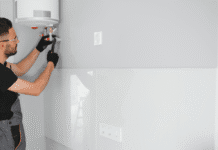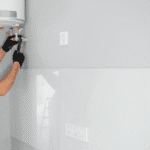Last Updated on October 4, 2024 by Asfa Rasheed
The roof of a home is its primary protection against the elements, yet it is often overlooked when considering home maintenance. Establishing a relationship with a knowledgeable roofing contractor is critical to ensure this vital component remains in top condition. Such an expert can provide a profound understanding of the structure of one’s home and the potential risks posed by local weather conditions, leading to a tailored and effective maintenance schedule. By having regular roof inspections, homeowners can prevent the escalation of minor issues into costly repairs. This proactive step is about solving immediate problems and anticipating future ones, thus helping maintain the roof’s integrity over time. It’s a strategic approach to property care that goes a long way in upholding one’s investment and ensuring the safety of inhabitants.
Table of Contents
The Necessity of Roof Inspections
An annual or bi-annual inspection by a seasoned professional is an essential safeguard against the slow degradation that can afflict any roof. Trained eyes can discern the early signs of wear and tear, such as cracked or curling shingles and rusted flashing, which could go unnoticed until they cause significant issues. Inspections can also inform homeowners about the overall life expectancy of their roof, allowing them to plan and budget for eventual replacement when necessary.
Common Roofing Issues and How to Spot Them
Roofs often exhibit a variety of red flags that can indicate more profound issues. For example, missing shingles can be a simple fix; however, they can also suggest a weakened roof structure. Granules in gutters reveal shingle degradation, while water stains on ceilings may indicate a leak. Timely identification and repair of these symptoms by homeowners can circumvent the kind of damage that diminishes the roof’s longevity and performance.
Best Practices for Roof Maintenance
Maintaining a roof requires consistent attention to various factors. This includes ensuring the roof is free of debris blocking water flow, checking for and addressing any signs of algae or moss, which can undermine roofing materials, and maintaining sealant around vents and chimneys. Trimming overhanging tree branches can also prevent physical damage and reduce the accumulation of leaves and debris.
The Economic Benefits of Proactive Roof Care
Consistent roof maintenance is an economical approach to home ownership. The costs of replacing a roof or repairing extensive damage far outweigh those for simple upkeep. As the National Association of Certified Home Inspectors highlighted, a well-maintained roof not only avoids premature replacement costs but can also enhance a home’s overall energy efficiency. This factor becomes increasingly important as energy prices rise.
Seasonal Roofing Considerations
As the seasons change, they each present unique challenges for roof maintenance. The heavy winter snow can cause structural stress, while autumn can lead to gutters clogged with leaves. Spring and summer storms bring their own set of risks, including damage from high winds and hail. Seasonal inspections can help to identify and mitigate these risks, keeping the roof sound year-round.
Detecting Hidden Damage: What to Look For
While some damage is easy to spot, some are more insidious. Hidden damage often manifests in ways not immediately associated with the roof, such as musty odors indicating trapped moisture and potential mold growth or sunlight peeking through the attic, which can signal gaps or holes. Being vigilant about these subtler signs is crucial for maintaining a roof’s condition and the overall health of a home.
Professional vs. DIY: When to Call the Experts
While a competent DIY enthusiast can undertake many aspects of roof maintenance, there comes a point when professional expertise is essential. Professionals are best able to handle complicated repairs, structural concerns, and safety issues. They possess the necessary skills and proper insurance and guarantees on their work.
The Impact of Technology on Roof Inspections
Advancements in roofing technology have significantly upgraded the inspection process. Drones can safely capture aerial images of the roof, providing detailed visuals of inaccessible areas. Infrared technology has enhanced water damage detection and poor insulation without invasive methods. These advancements make inspections more thorough and less disruptive to homeowners.
Protecting Your Investment: The Ultimate Roofing Maintenance Checklist
Homeowners should create a roofing maintenance checklist to address potential issues systematically. This list could include cleaning the gutters bi-annually, looking for shingle damage after storms, and scheduling professional inspections regularly. By adhering to this checklist, one can ensure they take all the necessary precautions to maintain their roof’s health – check out valorli.com to learn more.
Apart from that, if you want to know about Art of Exterior Then please visit our Home Improvement category
















